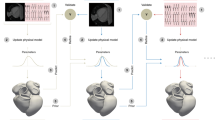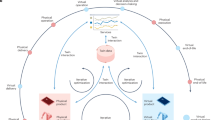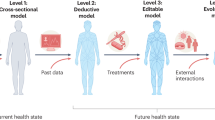Abstract
Digital twins bring value to mechanical and aerospace systems by speeding up development, reducing risk, predicting issues and reducing sustainment costs. Realizing these benefits at scale requires a structured and intentional approach to digital twin conception, design, development, operation and sustainment. To bring maximal value, a digital twin does not need to be an exquisite virtual replica but instead must be envisioned to be fit for purpose, where the determination of fitness depends on the capability needs and the cost–benefit trade-offs.
This is a preview of subscription content, access via your institution
Access options
Access Nature and 54 other Nature Portfolio journals
Get Nature+, our best-value online-access subscription
$29.99 / 30 days
cancel any time
Subscribe to this journal
Receive 12 digital issues and online access to articles
$99.00 per year
only $8.25 per issue
Buy this article
- Purchase on Springer Link
- Instant access to full article PDF
Prices may be subject to local taxes which are calculated during checkout



Similar content being viewed by others
References
AIAA Digital Engineering Integration Committee Digital Twin: Definition and Value AIAA and AIA Position Paper (AIAA, 2020).
Foundational Research Gaps and Future Directions for Digital Twins Consensus Study Report (NASEM, 2023).
Tao, F., Zhang, H. & Zhang, C. Advancements and challenges of digital twins in industry. Nat. Comput. Sci. https://doi.org/10.1038/s43588-024-00603-w (2024).
Trimble, S. Digital twin helps Pratt expand F119 performance for F-22. Aviation Week and Space Technology (3 October 2022).
NRC Assessing the Reliability of Complex Models: Mathematical and Statistical Foundations of Verification, Validation, and Uncertainty Quantification (National Academies Press, 2012).
AIAA Computational Fluid Dynamics Committee Guide for the Verification and Validation of Computational Fluid Dynamics Simulations (AIAA, 1998).
Karniadakis, G. E. et al. Physics-informed machine learning. Nat. Rev. Phys. 3, 422–440 (2021).
Peherstorfer, B. & Willcox, K. Data-driven operator inference for nonintrusive projection-based model reduction. Comput. Methods Appl. Mech. Eng. 306, 196–215 (2016).
Ghattas, O. & Willcox, K. Learning physics-based models from data: perspectives from inverse problems and model reduction. Acta Numer. 30, 445–554 (2021).
Brunton, S. L., Proctor, J. L. & Kutz, J. N. Discovering governing equations from data by sparse identification of nonlinear dynamical systems. Proc. Natl Acad. Sci. USA 113, 3932–3937 (2016).
Baker, N. et al. Workshop Report on Basic Research Needs for Scientific Machine Learning: Core Technologies for Artificial Intelligence (US DOE Office of Science, 2019).
Kapteyn, M. G., Pretorius, J. & Willcox, K. A probabilistic graphical model foundation for enabling predictive digital twins at scale. Nat. Comput. Sci. 1, 337–347 (2021).
Verification, Validation, and Uncertainty Quantification Terminology in Computational Modeling and Simulation Standard (ASME, 2022).
Acknowledgements
K.W. acknowledges support from Department of Energy grant DE-SC0021239 and Air Force Office of Scientific Research grants FA9550-21-1-0084 and FA9550-22-1-0419.
Author information
Authors and Affiliations
Contributions
Both authors contributed to the conception, writing and editing of this paper.
Corresponding author
Ethics declarations
Competing interests
A.F. is part of RTX, an aerospace and defense enterprise company. K.W. declares no competing interests.
Peer review
Peer review information
Nature Computational Science thanks Kristi Morgansen and Omer San for their contribution to the peer review of this work. Primary Handling Editor: Fernando Chirigati, in collaboration with the Nature Computational Science team.
Additional information
Publisher’s note Springer Nature remains neutral with regard to jurisdictional claims in published maps and institutional affiliations.
Rights and permissions
Springer Nature or its licensor (e.g. a society or other partner) holds exclusive rights to this article under a publishing agreement with the author(s) or other rightsholder(s); author self-archiving of the accepted manuscript version of this article is solely governed by the terms of such publishing agreement and applicable law.
About this article
Cite this article
Ferrari, A., Willcox, K. Digital twins in mechanical and aerospace engineering. Nat Comput Sci 4, 178–183 (2024). https://doi.org/10.1038/s43588-024-00613-8
Received:
Accepted:
Published:
Issue Date:
DOI: https://doi.org/10.1038/s43588-024-00613-8



